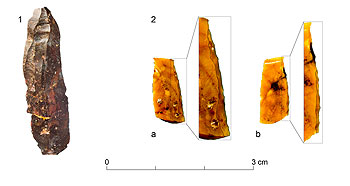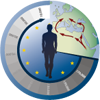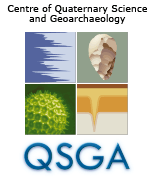The origins of the Upper Palaeolithic are still an open question in Palaeolithic archaeology. In 2003 and 2005, H. sapiens fossils were found at the site Peştera cu Oase (SW Romania). They belong to different individuals who lived before circa 40 ky ago. This revived the interest in SE Europe as a crucial spot for H. sapiens first dispersal on the continent. Though the fossils were not associated to any archaeological material, F. Mogoşanu excavated and reported a complex of open-air sites located northernly in the Banat region during the 1979s, yielding archaeological material fitting with the Oase dating: Tincova, Coşava and Româneşti.
That’s why the CRC806 in 2009-2011 started investigations in the area, managing to retrieve the sites and dating Româneşti to ≈40.5 ky. The lithic assemblage shows a hallmark of the early European Upper Palaeolithic: the Dufour bladelet.
The 2016 and 2018 excavations at Româneşti were successful in finding a discrete level from which the bulk of the 40 ky dated lithics originate from. Now that the collection numbers several thousands of artefacts it is possible to meaningfully investigate the chaîne opératoire, understanding the manufacturing processes ongoing during the repetitive frequentations at the site. Thus, I recently spent three weeks at the Romanian Science Academy in Bucharest for analysing the 2018 materials. The data collected will be compared with the collections from two other similarly dated sites, Fumane Cave (NE Italy) and Al-Ansab (S Jordan). The aim is to investigate technological diversity and commonalities for better understanding the spread of our species. I would like to thank A. Doboş and A. Ciornei of the Romanian Science Academy-Archaeological Institute “Vasile Pârvan” for the support provided during the research stay.
Text: Jacopo Gennai
Jacopo Gennai is PhD candidate in the B1 project and is currently analysing the stone artefacts from the sites Al-Ansab, Fumane Cave and Româneşti.
 Capture: Bladelet (left) and fragment of retouched Dufour bladelet (right) Capture: Bladelet (left) and fragment of retouched Dufour bladelet (right)Photo: Jacopo Gennai |



































